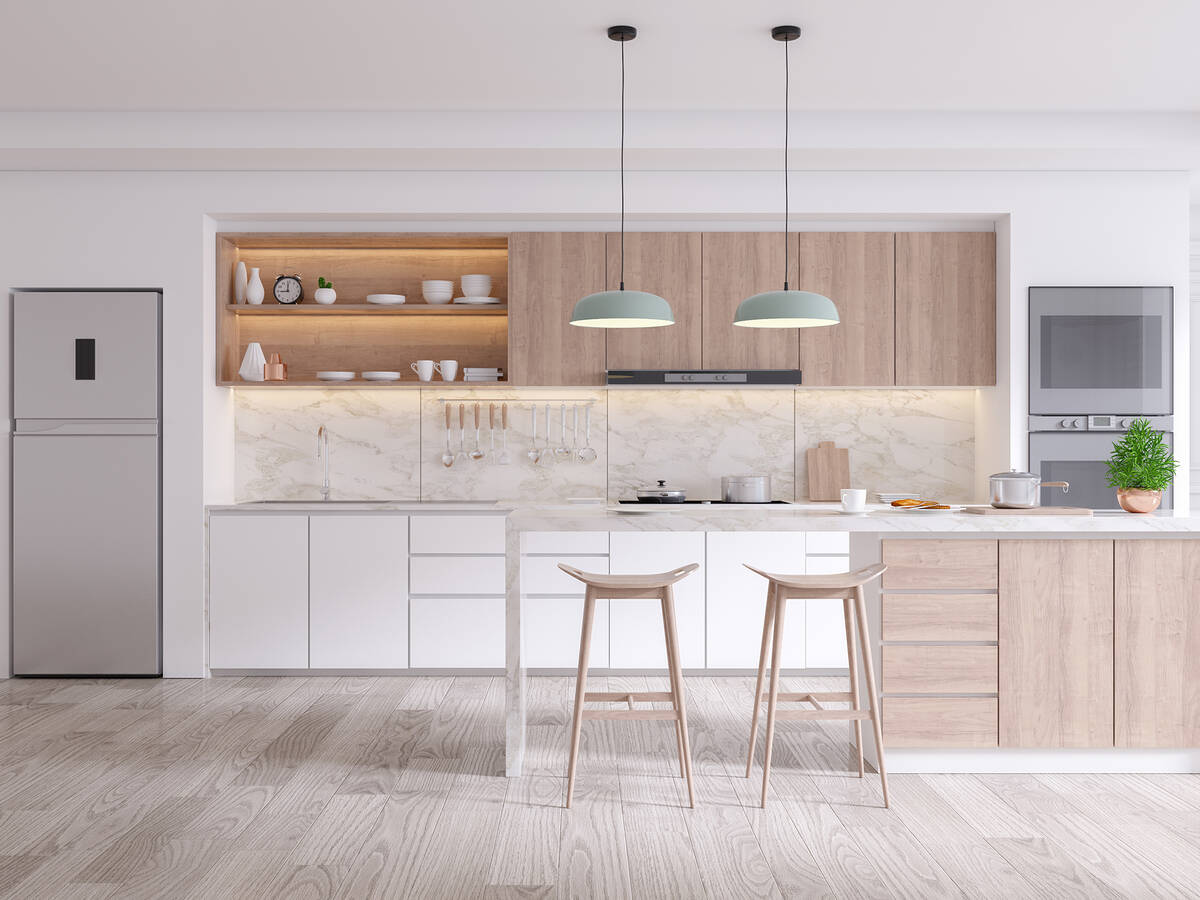Pure minimalism without sacrifice
Handle-free kitchens for practical functionality
Abandoning handles can have an enormous impact on the look: This minimalist design shows off the fronts perfectly, while also having many practical benefits. This article explores the advantages of this approach.

The trend towards purist beauty

Kitchens without handles have been growing in popularity for years. There are many reasons for this, ranging from personal style preferences right through to practical benefits.
The following aspects are in favour of abandoning knobs, handles and co.:
- Harmonious look
- Space to move
- Easy maintenance
Harmonious look
Traditional white is still the most popular colour for kitchen fronts. It is easy to match with other colours, and dirt is immediately noticeable for easier cleaning. Having said this, dark colours and matching with elegant materials are also on trend.
Abandoning handles definitely lends itself to this harmonious effect, as it makes the fronts look pure. It also creates a sense of serenity and tidiness, which is important – especially if your kitchen and living room are combined into one.
Elegant glass, varnish or stainless steel really come into their own here. The full effect of the warmth of the wood fronts can be felt without any disturbance from protruding handles. Concrete or natural stone and their natural patterns are much more impressive without handles in the way.
At the same time, handleless designs indicate a certain opulence, as not using handles requires modern technology. Which, of course, comes at a cost.
Space to move
Are you or one of your loved ones sometimes clumsy? If so, knob-free cupboards can help to prevent injuries. For families with small children, the space to move will make life so much easier, as there is one less safety hazard to contend with. This, in turn, enables you to relax as you cook with the whole family.
Easy maintenance
An end-to-end flat surface is much easier to keep clean than a surface with several elements. In the kitchen, organic matter can take hold in nooks and become the perfect breeding ground for biofilm. This compromises hygiene, even when diligently cleaned.
The downsides of abandoning handles
Just like everything in life, a kitchen without handles also has its downsides. To open doors, you will need to press points on the surfaces. This means they get dirty quickly, so they need to be cleaned often. If touched, the cupboards may also open without you wanting them to.
The different operating concepts
Choosing a handle-free kitchen means choosing an operating concept. Three different systems are available to choose from when it comes to eliminating the need for knobs or brackets.
1. Handle strips and recesses
Strips are usually made of aluminum and can be attached to the top, bottom, or side edge. They protrude slightly above the kitchen front, creating a space you can grab. In principle, these are discreet models that are hardly visible.
Recesses, on the other hand, are milled into the body. The recesses can be covered with metal shells. However, these recesses can also have the same surface as the front.
2. Push-to-open mechanism
This mechanism requires sophisticated technology. Closing a door tensions a spring. A sufficiently strong magnet in the hinge ensures that it remains closed. Pushing against the closed door releases the spring. A pin integrated into the hinge now gently pushes it open. This system is purely mechanical. For drawers, the mechanism can be installed directly in the rails.
3. Serv-on with sensor
The Serv-on mechanism works with electronic sensors and a small electric motor that moves the hinge. A sensor registers light touch on a certain area on the front. It then activates a motor that can open cabinet doors and drawers automatically.
Can’t decide on a solution? A combination of different methods could be an option: for example, recesses for wall cabinets, push-to-open for base cabinets, and Serv-on for the doors you open most often.
Frequently asked questions about kitchens without handles
Without knobs or handles, the materials on the fronts come into their own. It also creates a feeling of serenity and tidiness.
It is extremely difficult to hurt yourself on smooth fronts. This is particularly important with small children.
Organic matter can take hold on handles, which encourages an unhygienic biofilm to form.
They are easy to install from a technical standpoint and do not require additional technology.
Push-to-open works mechanically with magnets and springs. With serv-on, an electronic sensor triggers and electric motor.
Handleless kitchens for the perfect look and easy operation
Abandoning handles allows kitchen fronts to come into their own. The full effect of wood, concrete or natural stone and the combination of various colours can then be experienced without annoying flourishes. It also makes the units more convenient to use. There are three systems for designing a kitchen without knobs: profile handles, push-to-open and serv-on.Authorised dealers